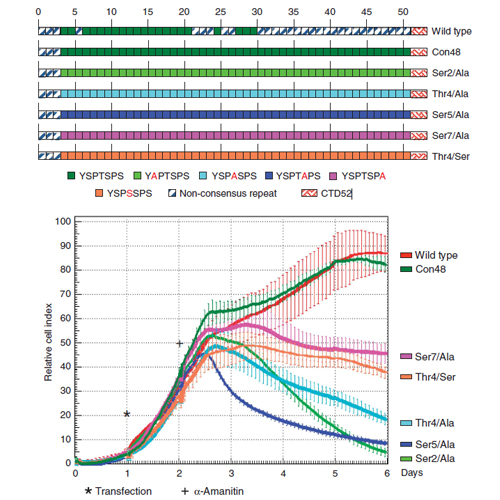Threonine-4 of mammalian RNA polymerase II CTD is targeted by Polo-like kinase 3 and required for transcriptional elongation
01-May-2012
The EMBO Journal, 2012, doi:10.1038/emboj.2012.123, 31, 2784 - 2797 published on 01.05.2012
The EMBO Journal, online article
The EMBO Journal, online article
Eukaryotic RNA polymerase II (Pol II) has evolved an array of heptad repeats with the consensus sequence Tyr1-Ser2-Pro3-Thr4-Ser5-Pro6-Ser7 at the carboxy-terminal domain (CTD) of the large subunit (Rpb1). Differential phosphorylation of Ser2, Ser5, and Ser7 in the 5′ and 3′ regions of genes coordinates the binding of transcription and RNA processing factors to the initiating and elongating polymerase complexes. Here, we report phosphorylation of Thr4 by Polo-like kinase 3 in mammalian cells. ChIPseq analyses indicate an increase of Thr4-P levels in the 3′ region of genes occurring subsequently to an increase of Ser2-P levels. A Thr4/Ala mutant of Pol II displays a lethal phenotype. This mutant reveals a global defect in RNA elongation, while initiation is largely unaffected. Since Thr4 replacement mutants are viable in yeast we conclude that this amino acid has evolved an essential function(s) in the CTD of Pol II for gene transcription in mammalian cells.











